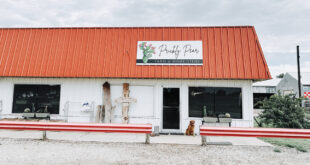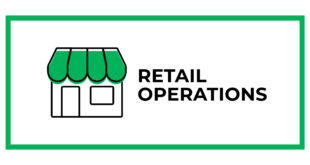For 100 years, the North American Retail Hardware Association (NRHA) has been putting together the Cost of Doing Business Study annually. The study collects financial information from more than 1,000 independent home improvement businesses. From the data industry averages are determined and reported. We asked two retailers why they use and participate in the study, and their responses are below. To read even more about what the study can do for your business, click here.
To participate in the 2017 study, click here.
Neal Aissa, Operations Manager, Tarzian Hardware
Hardware Retailing (HR): What elements of the Cost of Doing Business Study are most helpful to you?
Neal Aissa (NA): The ratios are very helpful. We look at all the ratios so we can compare our store to the industry average. We’re in a unique market in Brooklyn, New York, so it’s a really dense market, and we have super low square footage with high transactions. Because of this, some of our numbers are out of line, but the study helps us understand true industry standards. It’s also helpful when we’re having conversations about a new store location. It gives us some real numbers to look at, and that’s very useful.
HR: Have you used the study to make important decisions or changes to your business?
NA: It’s pushed us to try to spend more money on advertising. It’s tough in our market, but when we see that other retailers are spending a decent share on advertising, it reminds us that we need to find ways to do the same, whether it’s online efforts, targeted mailings or other methods.
HR: If you were speaking to another retailer who’d never head about the study, what would you tell them about it?
NA: I would tell them to use it. Other retailers can take the study to their accountant or bookkeeper to set up their financials in a similar structure. If you set it up the same way, you can easily use the study as a benchmark. I would also recommend reading through everything in the study. Check all the ratios as best you can. For the longest time, we were really just focusing on profit and loss. But as we’re cleaning up our books entirely, we’re looking at some of the balance sheets and cash statements, too.
Lauren Mathews, Communications Manager, Connolly’s Do it Best Hardware & Rental
HR: What elements of the NRHA Cost of Doing Business Study are most helpful to you?
Lauren Mathews (LM): We always start by looking at the Key Profitability and Productivity measurements to give us a quick snapshot of how we stack up. If there is anything there that really stands out as an area for improvement, we take that and dive into the study deeper as it relates to those metrics.
HR: Have you used the study to make any important decisions or changes to your business?
LM: We’ve used the study most recently to help guide a comprehensive inventory evaluation for our four locations. We used metrics such as GMROI, sales and inventory per square foot and inventory turnover, among others, to help us gauge where we should aim with the project. We also use it as one of many metrics we look at when making everyday decisions regarding expenses such as advertising, utilities and payroll.
HR: If you were speaking to another retailer who had never heard about the study, what would you tell them about it?
LM: It’s so important to regularly look at all aspects of your business to see where your best opportunities for improvement lie. The Cost of Doing Business Study is the quickest and easiest way to find “low-hanging fruit” and glaring issues. It sheds light on opportunities to better your business. We highly recommend it as one of your first steps into any improvement project. As always, once you’ve used the study to determine where to focus your efforts, reach out to fellow members who share similar demographics to see how you measure up to them. The report averages cover all demographics, so this will help you get a more accurate picture. Get their input on how they compare to the study and how you compare to them.
 Hardware Retailing The Industry's Source for Insights and Information
Hardware Retailing The Industry's Source for Insights and Information








